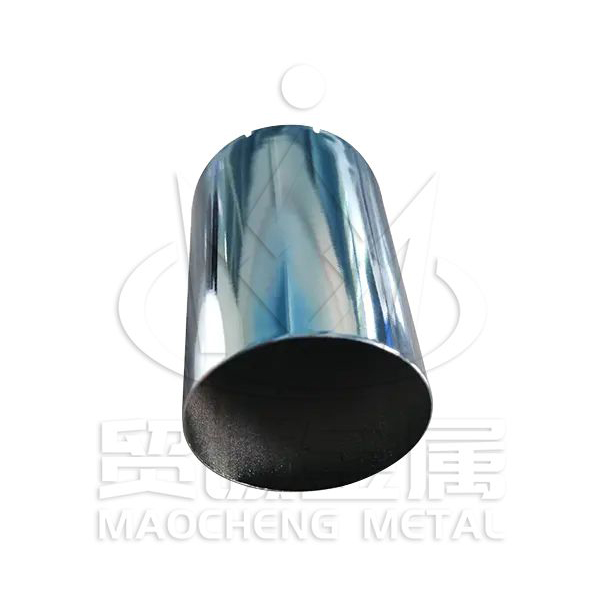Key Processes in Sheet Metal Fabrication
2024-05-28
Sheet metal fabrication is a manufacturing process that involves shaping and manipulating flat sheets of metal into a variety of products and components. This process typically includes cutting, bending, and assembling metal sheets to create parts used in various industries such as automotive, aerospace, construction, electronics, and manufacturing.
Key Processes in Sheet Metal Fabrication
1. Cutting:
- Shearing: Straight-line cutting of metal sheets using shear blades or cutting tools to create desired shapes and sizes.
- Laser Cutting: High-precision cutting method that uses a laser beam to vaporize or melt the metal along a predetermined path.
- Plasma Cutting: Utilizes a plasma torch to cut through electrically conductive materials, producing clean and accurate cuts.
2. Bending and Forming:
- Press Brake Bending: Utilizes a press brake machine to bend metal sheets at precise angles, forming bends and shapes according to design specifications.
- Roll Forming: Passes metal sheets through a series of rollers to gradually bend and shape them into cylindrical or curved forms.
3. Stamping and Punching:
- Stamping: Uses a die and punch set to stamp or press metal sheets into specific shapes, creating features such as holes, slots, and patterns.
- Punching: Punches holes or shapes out of metal sheets using a punch press machine, which can be automated for high-volume production.
4. Welding and Joining:
- Spot Welding: Joins metal sheets by applying pressure and heat to localized areas, forming welds or bonds between overlapping sections.
- TIG Welding (Tungsten Inert Gas): Produces high-quality welds by using a non-consumable tungsten electrode and inert gas shield.
- MIG Welding (Metal Inert Gas): Utilizes a consumable wire electrode and inert gas shield to produce strong welds quickly and efficiently.
- Soldering and Brazing: Joins metal sheets using lower temperature methods involving the melting of filler metals to create bonds between surfaces.
5. Finishing and Surface Treatment:
- Deburring: Removes sharp edges, burrs, and rough surfaces from metal parts using abrasive tools or methods.
- Surface Coating: Applies coatings such as paint, powder coating, anodizing, or plating to enhance appearance, corrosion resistance, and durability.
- Grinding and Polishing: Achieves smooth and uniform surface finishes by grinding away imperfections and polishing metal surfaces to a desired level of shine.
Materials Used in Sheet Metal Fabrication
1. Steel: Commonly used for its strength, durability, and versatility, available in various grades and thicknesses.
2. Aluminum: Lightweight and corrosion-resistant, suitable for applications requiring high strength-to-weight ratios.
3. Stainless Steel: Offers corrosion resistance and aesthetic appeal, ideal for applications requiring hygiene and cleanliness.
4. Copper and Brass: Known for their conductivity and attractive appearance, used in electrical and decorative applications.
5. Titanium: Provides high strength-to-weight ratio and corrosion resistance, used in aerospace and high-performance applications.
Applications of Sheet Metal Fabrication
1. Automotive Industry:
- Body Panels: Fabrication of car body panels, frames, chassis components, and structural parts.
- Exhaust Systems: Manufacturing of exhaust pipes, mufflers, and catalytic converters.
- Interior Components: Production of dashboard panels, door panels, and trim components.
2. Aerospace and Aviation:
- Aircraft Structures: Fabrication of fuselage sections, wings, tail fins, and engine components.
- Interior Furnishings: Manufacturing of aircraft seats, cabinetry, and storage compartments.
- Avionics Enclosures: Production of enclosures and housings for avionics equipment and instrumentation.
3. Construction and Architecture:
- Structural Components: Fabrication of beams, columns, trusses, and building frameworks.
- Cladding and Facades: Manufacturing of metal cladding panels, roofing sheets, and architectural facades.
- Interior Fit-Outs: Production of metal partitions, ceilings, and decorative elements for interior spaces.
4. Electronics and Electrical Enclosures:
- Control Panels: Fabrication of electrical control panels, cabinets, and enclosures for industrial equipment.
- Electronic Enclosures: Manufacturing of housings for electronic devices, servers, and telecommunications equipment.
5. Industrial Machinery and Equipment:
- Machine Parts: Production of components such as brackets, frames, guards, and housings for industrial machinery.
- Conveyor Systems: Fabrication of conveyor belts, rollers, and guides used in material handling systems.
- Tooling and Prototyping: Manufacturing of tooling dies, molds, and prototypes for product development and manufacturing processes.
Advantages of Sheet Metal Fabrication
1. Versatility: Sheet metal can be cut, bent, formed, and welded into a wide range of shapes and configurations to meet diverse design requirements.
2. Strength and Durability: Metal materials offer high strength-to-weight ratios and durability, ensuring structural integrity and longevity in applications.
3. Precision and Accuracy: Advanced fabrication techniques and machinery enable precise and accurate production of complex parts and components.
4. Cost-Effectiveness: Economical production methods, material efficiency, and scalability make sheet metal fabrication cost-effective for both small-scale and large-scale manufacturing.
5. Customization and Adaptability: Sheet metal fabrication allows for customization and adaptation of designs to meet specific functional, aesthetic, and performance requirements.
Considerations for Sheet Metal Fabrication
1. Design Considerations: Design parts with manufacturability in mind, considering material properties, forming processes, and assembly requirements.
2. Material Selection: Choose the appropriate material based on factors such as strength, corrosion resistance, weight, and cost.
3. Tolerances and Dimensional Accuracy: Specify tolerances and dimensional requirements to ensure parts fit and function properly in the intended application.
4. Lead Times and Production Capacity: Plan production schedules and lead times based on the availability of materials, equipment, and manufacturing capacity.
5. Quality Assurance and Inspection: Implement quality control measures and inspection protocols to verify the accuracy and integrity of fabricated parts.
Sheet metal fabrication plays a vital role in manufacturing industries, providing efficient and versatile solutions for producing a wide range of products and components. With advancements in technology and fabrication techniques, sheet metal fabrication continues to evolve, offering innovative solutions for diverse applications across various industries.



